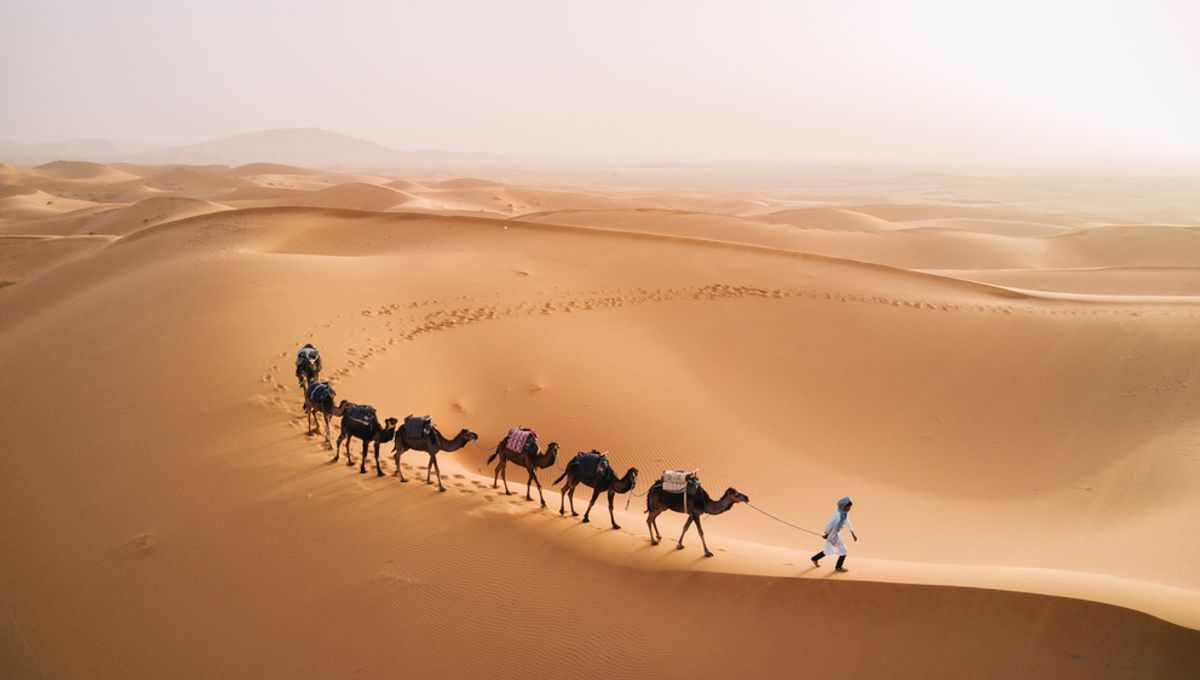
It may feel like the sand dunes and rocky plateaus of the Sahara Desert are as old as time, but that couldn’t be further from the truth. As shown by a new study, this vast strip of North Africa flips from arid desert to lush green woodland every 21,000 years or so.
The last period in which the Sahara was a green woodland occurred between 15,000 and 5,000 years ago. This latest research affirms that this was not just an odd blip, but part of a cyclic transformation that changed the area from arid to humid roughly every 21,000 years.
“The cyclic transformation of the Sahara Desert into savannah and woodland ecosystems is one of the most remarkable environmental changes on the planet,” Dr Edward Armstrong, lead study author and a climate scientist at the University of Helsinki and University of Bristol, said in a statement.
“Our study is one of the first climate modelling studies to simulate the African Humid Periods with comparable magnitude to what the palaeoclimate observations indicate, revealing why and when these events occurred.”
The new research looked to better understand the so-called “North African Humid Periods” over the course of the last 800,000 years using a recently developed climate model.
Their work affirmed the idea that the periodic wet phases in the Sahara were driven by changes in Earth’s orbit around the Sun. It’s generally agreed that the “greening” of the Sahara is caused by Earth wobbling on its axis, impacting the seasonality and determining the amount of energy received by this part of the planet. This ultimately affects the strength of the African Monsoon, which helps control how much vegetation spreads across this vast region.
However, their workings also suggest that this cycle might be influenced by the distant high-latitude ice sheets in the Northern Hemisphere. Their work notes that the humid periods did not occur during the Ice Ages when much of the Earth’s high latitudes were caked in thick glacial ice sheets.
They speculate that these ice sheets helped to cool down the atmosphere like a refrigerator, limiting the African Monsoon system and suppressing the growth of plant life in the Sahara Desert.
The cyclical transformation of North Africa isn’t just a big deal for the Sahara, it also has huge implications for our own story. After all, some of humans’ biggest early feats – the migrations out of Africa – were largely dictated by the condition of the Sahara. Depending on its “mood”, it could either act as a harsh hurdle or a welcoming pathway.
“The Sahara region is kind of a gate controlling the dispersal of species between both North and Sub-Saharan Africa, and in and out of the continent,” explained Miikka Tallavaara, co-author and Assistant Professor of Hominin Environments at the University of Helsinki.
“The gate was open when Sahara was green and closed when deserts prevailed. This alternation of humid and arid phases had major consequences for the dispersal and evolution of species in Africa. Our ability to model North African Humid periods is a major achievement and means we are now also better able to model human distributions and understand the evolution of our genus in Africa,” continued Tallavaara.
The study is published in the journal Nature Communications.
Source Link: The Sahara Transforms Into A Lush And Green Land Every 21,000 Years